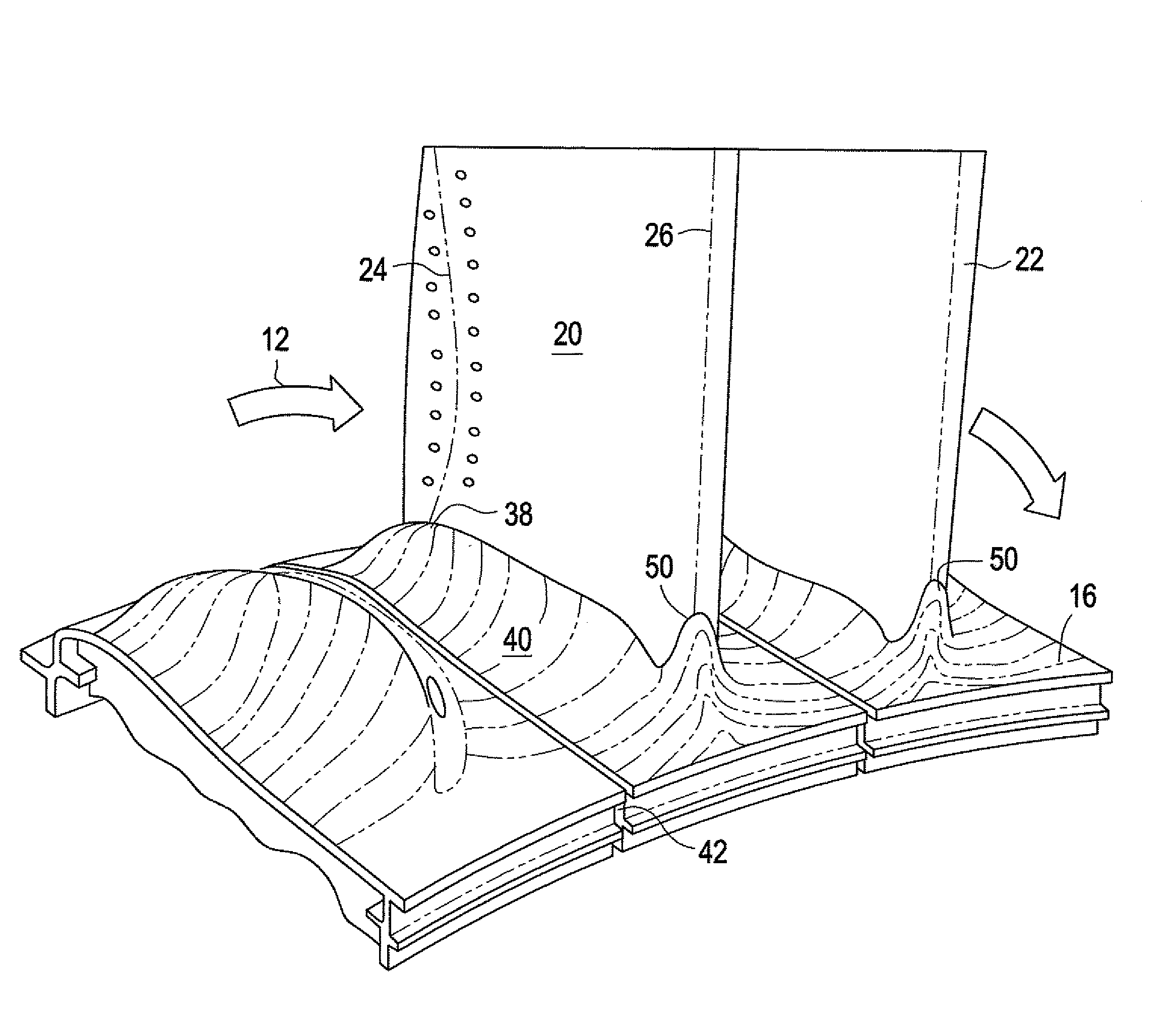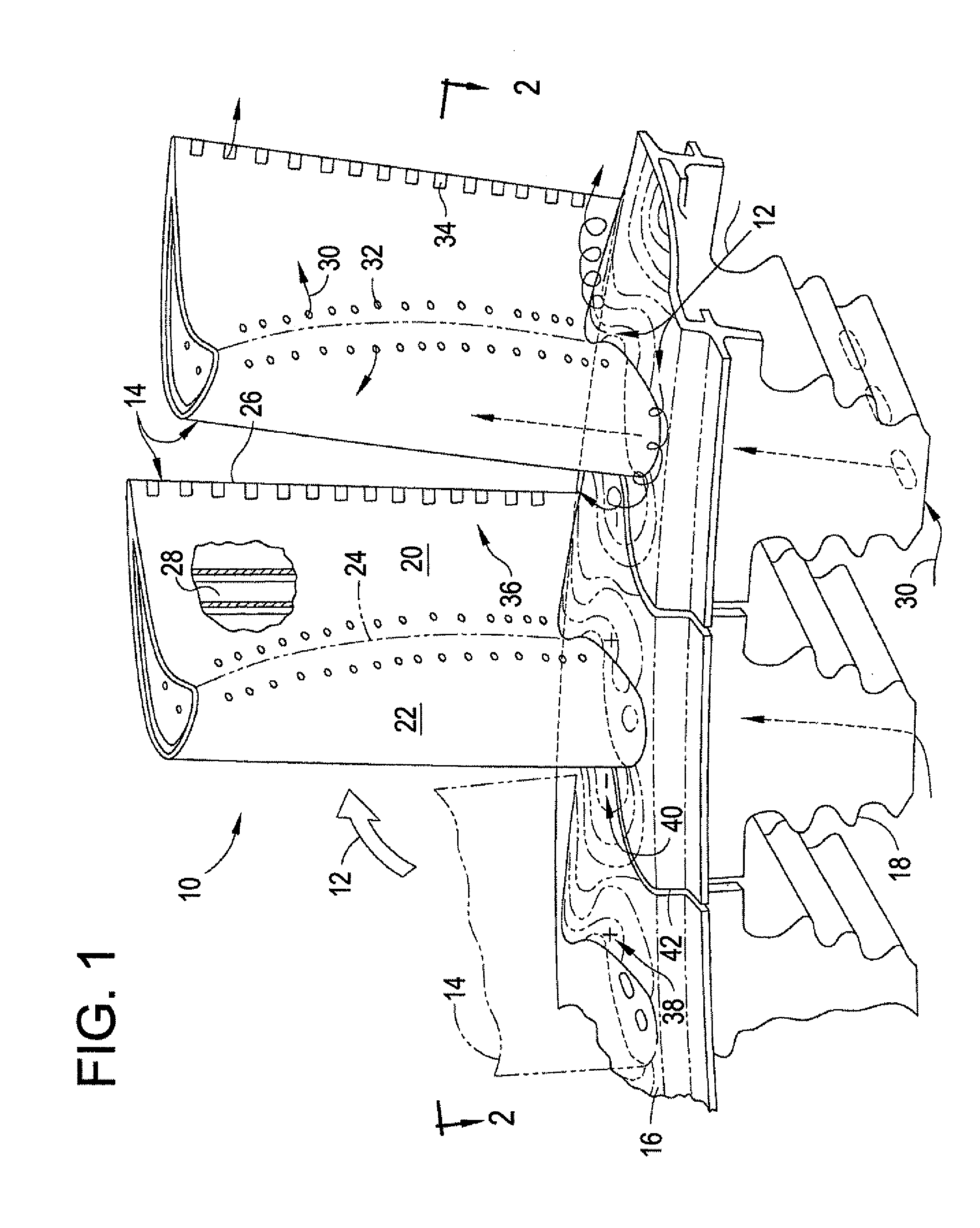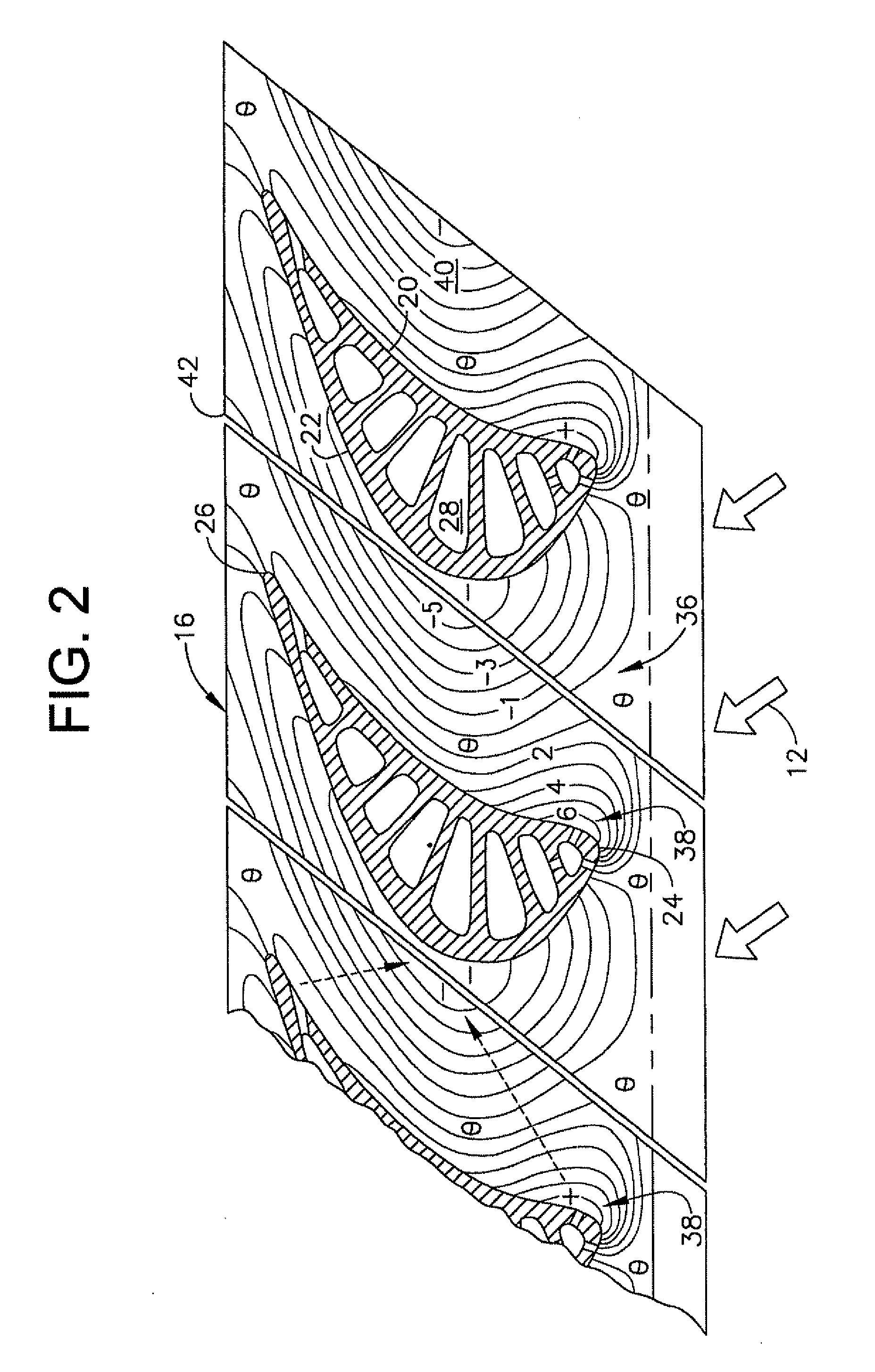Scalloped surface turbine stage with trailing edge ridges
a surface turbine and trailing edge technology, applied in the field of turbines, can solve the problems of unsatisfactory reduction of overall turbine efficiency, turbine pressure loss, horseshoe vortex, etc., and achieve the effects of improving efficiency and thermal loading, reducing horseshoe and secondary flow vortex affecting, and increasing aerodynamic loading
- Summary
- Abstract
- Description
- Claims
- Application Information
AI Technical Summary
Benefits of technology
Problems solved by technology
Method used
Image
Examples
Embodiment Construction
[0027]Illustrated in FIG. 1 are two exemplary first stage turbine rotor blades 10 which circumferentially adjoin each other in a full row thereof in a corresponding turbine stage of a gas turbine engine. As indicated above, combustion gases 12 are formed in a combustor (not shown) and discharged in the axial downstream direction through the row of turbine blades 10 which extract energy therefrom for powering a supporting rotor disk (not shown) on which the blades are mounted.
[0028]The turbine stage includes a complete row of the blades, with each blade having a corresponding airfoil 14 joined at a root end to a corresponding radially inner endwall or platform 16. Each platform may in turn be joined to a corresponding axial-entry dovetail 18 conventionally configured for supporting the corresponding turbine blade in the perimeter of the rotor disk.
[0029]Each airfoil includes a generally concave pressure side 20 and a circumferentially or laterally opposite, generally convex suction s...
PUM
 Login to View More
Login to View More Abstract
Description
Claims
Application Information
 Login to View More
Login to View More - Generate Ideas
- Intellectual Property
- Life Sciences
- Materials
- Tech Scout
- Unparalleled Data Quality
- Higher Quality Content
- 60% Fewer Hallucinations
Browse by: Latest US Patents, China's latest patents, Technical Efficacy Thesaurus, Application Domain, Technology Topic, Popular Technical Reports.
© 2025 PatSnap. All rights reserved.Legal|Privacy policy|Modern Slavery Act Transparency Statement|Sitemap|About US| Contact US: help@patsnap.com



